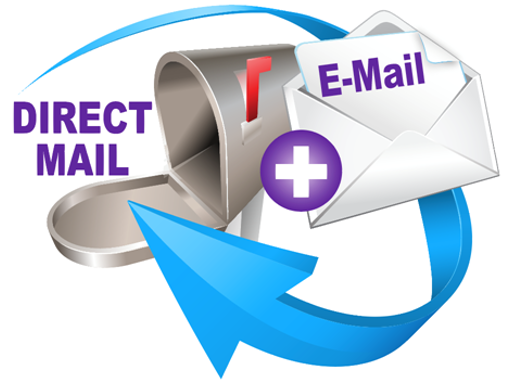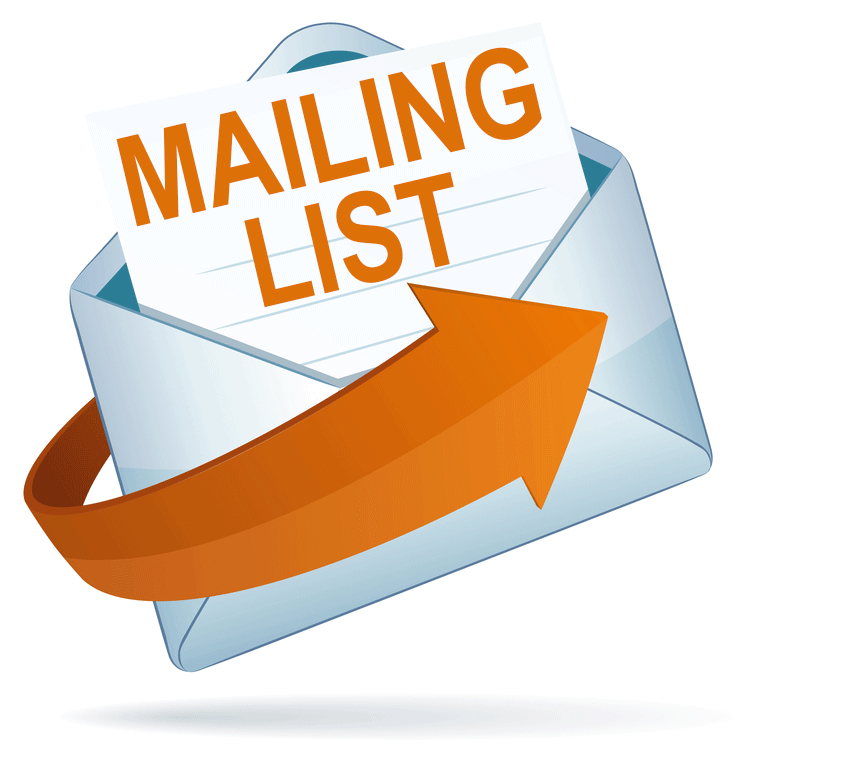 According to an article by the American Marketing Association (AMA) in 2017, individuals are smacked with 10,000 marketing messages per day – but probably don’t remember even 1%, because as savvy consumers, we’re experts at tuning out marketing and advertising, unless it strikes us personally. From advertisers who scream in their ads, “Buy me because I’m awesome” to marketers who say “content, content, content – oh, and read this, too.” Mainstream and viral forms of media seem to communicate with arrogance, as if we, as media consumers, should wait with bated breath. If someone talks AT you instead of TO you, do you listen? (Let’s hope the answer is NO!) Marketing is no different. Prospects and customers (and every stage between, before, and after), want to be part of a conversation, not a victim of a marketing rant. Her's how to do it right SAVE YOUR BREATH FOR THOSE WHO CARE Not everyone will be a prospect for your company. If you do business right, only a sliver of what you consider your target market will be a prospect. If you make it seem like you sell to everyone, you’re not targeting anyone. Step back, study, and consider who you want to appeal to. Don’t be afraid to pick verticals and be intentional about who you want to target. Prospects may want to find a company they like, know, and trust, but your business also deserves to work with customers you like, know, and trust. PERSONALISE, BUT DON’T BE OVER THE TOP Everyone knows there are personalisation tokens in emails that sync up to your contact database, but if you insert too many, you’re practically begging to look like a marketing automation robot. Remember about saving your breath for those who care? Try personalising emails with information that relates directly to the prospect; for example, include an interesting fact you learned about the prospect, follow up on an event the prospect shared with you, etc. If you show you care, if your empathy is apparent, if you see more than a number or an email address, you’ll set yourself ahead of the competition. You can’t beat authenticity. EMPATHY WINS. ALWAYS. Merriam-Webster defines empathy as the action of understanding, being aware of, being sensitive to, and vicariously experiencing the feelings, thoughts, and experience of another of either the past or present without having the feelings, thoughts, and experience communicated in an objectively explicit manner; also: the capacity for this. Doesn’t it make you feel good just reading this definition? Empathy pulls at your heartstrings. It makes you feel alive. It makes you feel appreciated and understood. From a prospect’s perspective, it makes them feel like their challenges and problems matter. Having received empathy is a building block to the foundation of trust. And you know where trust gets you in a relationship – everywhere. If you can’t be empathetic in your communication and how you handle prospects, customers, and colleagues, you’re shooting yourself in the foot. Go beyond being believable – be real. CREATE CONTENT THAT MATTERS Your marketing folder is likely chock full of stuff – eBooks, webinars, guides, etc. But do the marketing materials truly matter? And salespeople, this goes for your sales materials, too. Yes, it may have taken a lot of time and money to create that eBook three years ago, but if there isn’t authentic value in the material, don’t offer it to your prospects. There’s no sense in judging their intelligence or wasting their time. Instead, focus on creating marketing content that’s engaging and packed with valuable insight and expertise that goes above and beyond what your competitors are offering. Invest in quality content writing, killer graphic design, and an aesthetically pleasing layout. (Shameless plug: talk to our team at Leading Results to nail the above.) Your prospects are testing the waters to see if your company is the best fit, and this is when you put your best foot forward. You can’t know – or even predict – how they find you first, so make sure every interaction with your prospects is top notch. BE WHERE IT MATTERS I’m a rock fan, and I thought of the song ‘Everything’ by Everclear, a 90s alternative rock band, as soon as I thought of this blog. You do what you do You say what you say You try to be everything to everyone You know all the right people You play all the right games You always try to be Everything to everyone It’s exhausting to be everything to everyone, and it’s exhausting to be everywhere to attract … no one. Remember: if you target everyone, you’re selling to no one. If you’re intentional about prospecting to your defined target market, be where they are. If your target market reads scientific journals, then by gosh, your company better be finding creative, engaging ways to be seen in scientific circles. The important thing is to avoid wasting your time in spaces your target market doesn’t frequent. You’re wasting time, energy, and resources that could put you in front of the prospects best suited for your company. Clear goals, a clear direction, empathy, and authenticity win. This form of marketing and communication isn’t just refreshing, it’s how prospects want to be courted. It’s how HUMANS want to be treated. Does your marketing need humanisation? Contact us – we’d love to chat with you about a marketing strategy and program that will align and resonate with your target market and prospect base.
0 Comments
 The rise of smart phones, apps and mobile internet access has made the mobile phone a key battleground in the fight for new business and customers' attention. Although the pace of technological change gives you the chance to try innovative techniques and ideas, there are still opportunities for more traditional kinds of mobile marketing, like text message campaigns. One of the main attractions of mobile marketing is that mobile phones are almost always switched on and people usually have them to hand. That means text messages (also called SMSs, for 'short messaging service') are usually read. Mobile internet is growing fast What's more, the mobile phone has become the first place people turn in all kinds of situations: to check for directions or to look up the price of a product, for example - indeed, to find any information online. Because people use their phones in these ways, your business can benefit hugely from intelligent mobile marketing. In fact, the majority of people in the UK now access the internet from mobile devices. This means potential customers are going to try and reach your business via their mobile phones whether you like it or not. You need to consider the experience they have. Mobile marketing improves satisfaction For small businesses in particular, the mobile phone offers exciting opportunities to improve customer service and satisfaction. Texting and emailing customers on their mobile phones can be part of a better, more personal service. Sending details of promotions and events can boost business. If you're more ambitious, you can create your own mobile app. But whatever you do, you need to mobile-optimise your website so that people using smart phones can find what they're looking for. With the mobile landscape still changing swiftly, don't regard mobile marketing as separate to your other marketing efforts. In particular, it's becoming harder to determine where online marketing ends and mobile marketing begins. With mobile internet access commonplace, you must consider mobile users whenever you're changing your website or sending a marketing email. (Statistics suggest most emails are now opened on mobile devices, so it's vital your emails are readable on small screens.) You can't control how or when people use their mobile phones. And as other mobile devices like tablet computers become widely used, the mobile world will only continue to grow. Using mobile phones to inform your customers When it comes to mobile marketing, small firms often have an advantage over big brand names because they already have a personal relationship with customers. As a result, contacting them by mobile phone does not appear so intrusive. Many small businesses can benefit from mobile phone communication. For example, local entertainment businesses such as restaurants can use text and email marketing to advertise special events. And retailers can text details of sales or vouchers timed to catch shoppers in the right place. Businesses that work by appointment, such as opticians or hair salons, are ideally placed to use text messages or apps to send reminders and to alert customers when it's time to book their next appointment. What's more, they can send special offers and details of last-minute availability. Mobile marketing targeting Smart phones offer some interesting targeting opportunities. Most are equipped with location services, which means they can determine their location via GPS. Your mobile app or website can use this facility to direct customers to their nearest branch, or to display special offers when people are in your neighbourhood. With the right timing, this sort of targeting is valuable. Contact shoppers when they are on the high street - at the weekend - and you increase the potential for new business. But whatever you do, never send intrusive messages at unsocial hours. Finally, remember that if you intend to contact customers via text messages or calling their mobile phones, you need permission - just as with all other direct marketing.  If you're marketing to a local audience, there are more tools available than ever to help you. In this blog find out how you can use online services, as well as traditional marketing techniques, to attract local customers. Appealing to local customers is easier than ever. And it's not just about flyers and local ads; technology can also be used to market at town or even postcode level. It's just easier to market within a defined geography, for example, in theory I can consult across the whole of Europe, but in practice I keep to my home town and neighbouring counties. I can network locally, I can use local marketing techniques, and there are enough customers in the catchment area to keep me busy. It's about fishing where the fish are. Get listed in local directories The internet is an increasingly powerful local marketing tool. As a first step, you can get listed with Google My Business so customers searching Google and Google Maps find your contact details. Free Index is another free online directory. With FreeIndex, your local customers can add reviews. The more positive reviews you get, the higher up the index you go. Basic listings on sites such as Thomsonlocal.com and Yell.com are also free. Location-based social networking Another easy step to ensure local customers find you online is to optimise your website for local searches. At its most basic, this means including your operating area in the keywords of all pages and page title fields, and adding as many relevant backlinks (links from other local websites) as possible. Increasingly, social media is also lending itself to local marketing. Restaurants, bars and shops, for example, might consider listing on Foursquare, a free location-based mobile app that uses global positioning data to allow people to share information about places to eat, drink, shop or visit. Users can pick up automatic suggestions on where to go from within their vicinity. Traditional marketing for local businesses Face-to-face networking can be an extremely effective way of building local custom, particularly for business-to-business customers. If someone has met you, they are much more likely to want to use your firm or refer you. Networking can also help you develop marketing partnerships with local, complementary businesses. For example, a high-street wedding dress designer and florist may find it valuable to promote each other in their marketing. Other traditional marketing techniques you could use to attract local custom include targeted leaflet drops, press releases to local media and local sponsorship. Evaluating response to your local marketing To ensure you're spending your time wisely, measure the effectiveness of your marketing strategy. Put in tracking mechanisms so you can measure how successful each technique is. Evaluating web-based marketing can be easy using Google Analytics, which is free, but if you do only one thing, ask all new customers how they heard of your company.  Direct mail and email can be very effective ways of marketing your business, allowing you to reach large numbers of customers at low cost. Email offers immediacy and low cost, while well-designed direct mail can really stand out. Whether you are using direct mail or email, you need to be sure you are contacting the right people with the right message. Monitoring responses allows you to track effectiveness and improve future mailings. 1. Is it for you? Establish who your target audience is
Decide what you want to achieve with existing customers For example:
Decide what you want to achieve with new prospects For example:
Identify what the costs would be
Assess likely response rates
Decide whether mailing is the right option
2. Your own mailing list The quality of your database is the most critical element in achieving a good response rate. It pays to create your own list
If you plan a significant volume of mailings, use database or CRM software
Your database is a valuable business asset and must be managed
3. External mailing lists If you want to reach out to a larger slice of the market, renting a mailing list is usually the most cost-effective method. Many lists can be rented or bought in
Identify your needs, in writing
Shop around until you find the right list at the right price
Check the quality of the list
Negotiate a deal
Do not re-use a list you have rented for one-off use
YOUR LEGAL RESPONSIBILITIES You must comply with the Data Protection Act
You must not send unsolicited email to individuals
You should not send direct mail to individuals who do not want it
Always allow individuals and businesses to opt-out from future mailings or email
4. The mailing A well-produced mailing will create a better response rate. Quality is important - you are competing with all the other mail and email that is sent to your target groups. Choose the right timing
Create a compelling mailing
Plan your follow up
5. Testing and monitoring A great advantage of direct mail is the ability to test a range of possibilities quickly and simply. Split test different mailings
Test different offers
Test different sectors of the market
Try different timings
Experiment to find out what works
6. Using a mailing house A small business can easily handle mailings of up to 1,000 items
Find potential suppliers
Shop around for quotes
Check that the mailing house does a good job
 Your mailing list is one of your most valuable marketing resources. It holds information on your customers and prospects that can be used to improve customer satisfaction and increase sales. An up-to-date marketing database is a goldmine of useful information. It can help you run your business more effectively, providing a snapshot of your most profitable clients and highlighting sales trends. Building a mailing list Before you begin to create a database, you need to think about the information you want to hold on each contact. Basic customer details - address, email, telephone and fax numbers - are just a starting point. Details about buying habits will enable you to better understand your customers and meet their needs. You can also collect lifestyle information such as gender, age and income so you can target your marketing messages at specific demographic groups. Your contact list can be compiled from a number of sources. Start with your existing customers and contacts. You can then find new prospects in your area by looking in the electoral register. For business prospects, you can refer to the membership lists of industry bodies or local Chambers of Commerce. You can also consult directories. Copying and mailing a whole list, however, is a breach of copyright. Renting or buying a mailing list is a good way to reach a new customer base. List rental usually costs about £120 per 1,000 mailing names - but bear in mind lists of consumers tend to be cheaper than lists of business contacts. When you shop around for the best mailing list, you can ask for high spenders or other groups based on social type, location or job title. Keeping your database clean Keeping your mailing list clean is an important job. A good direct marketing contact list should have accurate, up-to-date and relevant data. It's vital to clean your list regularly by removing or amending incorrect data (for example, when mailings arrive 'returned to sender') and getting rid of duplicate entries. You will quickly alienate your contacts if you send them mailings that are wrongly addressed or irrelevant to them. The law gives individuals the right to stop their personal information being used for direct marketing. A request in writing must be honoured within 28 days. Individuals can also ask to see any personal information you hold about them to check if it is correct. You can improve the accuracy of your marketing database by checking it against the Royal Mail's Postcode Address File (PAF). This service checks spelling and accuracy of addresses and postcodes and corrects them in your mailing list. Finally, make sure you do regular checks against the Mailing Preference Service (MPS) list, the Telephone Preference List (TPS) and the Fax Preference Service (FPS). These services are for consumers who want to opt out of receiving unsolicited mail, calls or faxes. Using your database to improve profitability Your database can reveal your customers' buying behaviour, including the type and frequency of orders. It can highlight trend and patterns. It can even help you target your perfect customer. This is valuable market intelligence. By analysing your own data, you can make more informed decisions about everything from product development to pricing. Take that perfect customer profile, and you can find new prospects that match it and target them. Your mailing list also enables you to improve customer service and build better relationships with customers. By understanding your customers better, you can give them what they want. Your guide to buying mailing lists Buying a mailing list can be fraught with pitfalls, so here are my eight valuable pieces of advice to help you source the right mailing list 1. Don't delegate: I receive many enquiries from receptionists, apprentices or others who are not qualified to source marketing data. At the very least, the person sourcing the list should have an in-depth understanding of your marketing campaign objectives and target audiences. In our experience, delegation of data purchasing usually ends up with decisions being made on price only. If you want to go down this route, you can just buy a cheap list from eBay and throw the budget and potentially your good reputation down the drain. Even the business owner may not have much expertise in the nuances of marketing data. The safest route is to get expert impartial advice before you speak to data sales reps. 2. Don't believe the hype: All data list owners will tell you that their data is the best and that it is unique in the marketplace. The truth is it is all just hot air. When you speak to a mailing list company, you don't speak to the data experts, you speak to a sales person paid to tell you good things about their data. So take what the sales person says with a pinch of salt and ask the right questions so you can compare the different lists that are available. 3. Don't ask silly questions: How good is your data? You might think this is a good question, and certainly it's one many people ask, but what answer are you expecting back? I guarantee that all responders will give you a pre-prepared spiel that again leaves you with no tangible information about choosing a suitable list. Questions to ask should cover guarantees, legalities and data suppressions, opt-in mechanisms and sources, samples, duplicate prevention and more. A good broker will ask these questions for you. 4. Don't believe that all data is equal: Would you buy a "genuine article" Rolex off a man in the pub for a tenner and expect it to be real? No, you wouldn't. But some small business owners do believe the hype from data sales people and then they wonder why their mail server is shut off, why they have complaints about spam and why the data owner is slow to return their complaint call. 5. Don't buy from people who are not experienced: I have seen many companies appearing recently claiming to be data experts. It's vital to work with companies that have good data credentials so that you get lists that comply with legal and ethical marketing standards. 6. Don't jump in with both feet: As a rule of thumb, data sales people prefer you to buy large amounts of data and therefore spend more money with them. They frequently come up with silly offers to tempt you into giving them a large chunk of their monthly sales target. Then these offers come your way, take stock and work out whether it is actually worth your while to buy big chunks of untested data. As a rule of thumb, test first to validate the list before buying large volumes. And if it's too good an offer to be true, walk away. 7. But don't take the samples as gospel: If you have ever purchased a duff list after receiving a good sample, think about these questions before buying your next list: Do you think data companies realise the importance of good samples pre-sale? Do you think data companies have ever considered cleansing a sample before release? 8. Give data procurement the importance it deserves: Do your research. Adhere to direct marketing laws. Think of the ethics and brand implications of using poor quality and/or illegal marketing data. Buy from Direct Marketing Association (DMA) members only. And most importantly, speak to data experts. After all, would you fix your own car? |
AuthorLisa Hunter is an experienced Marketing, Events and Project Manager. She has over 10 years’ experience working in the IT and marketing industry, delivering strategic marketing support and managing creative projects for a wide-range of clients. In this blog she shares her knowledge and experiences…we hope you enjoy it. Archives
June 2019
Categories
All
|
 RSS Feed
RSS Feed